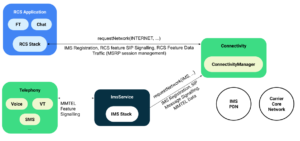eCommerce websites differ from most other sites in that they need to make a big impression—fast. Customers won’t always spend long browsing, and nor will they take the time to navigate a confusing or glitchy site. Getting your site up and running is difficult, so here’s a rundown of some of the best design tips.
1. Simplicity is key
Products are king. Rather than burying your items under text and flashy graphics, keep your website as clean as possible and focus all the attention on your products. Most eCommerce sites opt for the most minimalist layout that they can find; usually a plain white background with a gallery view. More than just showcasing products, this also makes the site much easier to navigate.
2. Understand how customers think
Design your site with your customers in mind and consider their needs at every step. Think about how easy the site is to navigate: How many clicks does it take to find individual products? Is the search function in-depth enough? Are products organized logically? Consider the checkout process, too: lots of sites lose customers at the last moment because their checkout is too complex and demands too many details. For example, do you actually need to know where a customer heard about your site, and does this question need to be included at checkout?
3. Optimize for mobile
Mobile optimization might just be the most important tip of all. Mobile traffic represents a vast portion of all internet use, but poorly optimized sites are slow to load and can be glitchy, which deters customers and makes you look unprofessional. Simple tips including using a responsive theme and avoiding large blocks of text helps, but many businesses seek out professional eCommerce designers such as the experts at Shopify. They know exactly how to make your store sparkle on mobile, encouraging the smartphone audience through your virtual doors.
4. Build your brand
Brand-building is an ongoing exercise that involves creating a coherent company aesthetic across multiple platforms. Using the same color scheme, designing an eye-catching (and memorable) logo, and even using the same “tone” to write content, all work wonders. Identify your niche and work within that. If, for example, your store specializes in new gadgets, build your brand around future tech and maintain a sharp focus.
5. Link to social media
Social media is the lifeblood of most eCommerce websites. Driving traffic from social media to your store (and vice versa) is an important process for generating sales. As such, make it easy for customers to find your social media platforms and also to share content there. Include share buttons on products and showcase brand-specific hashtags that are designed to increase engagement.
6. Use categories
Categories serve the dual purpose of keeping your homepage clean and helping customers to find exactly what they want, and fast. Overloading product pages with countless images and descriptions just creates a confusing environment for customers, who won’t take the time to scroll through everything on offer. Categories streamline the process, sending customers straight to the products they want.






More Stories
How to Effectively Remove ChocoEukor from Your Android Device
dji pocket 3 vs. Competitors: Which Gaming Console Reigns Supreme.
High-Quality Collection of Animated Booting Gifs